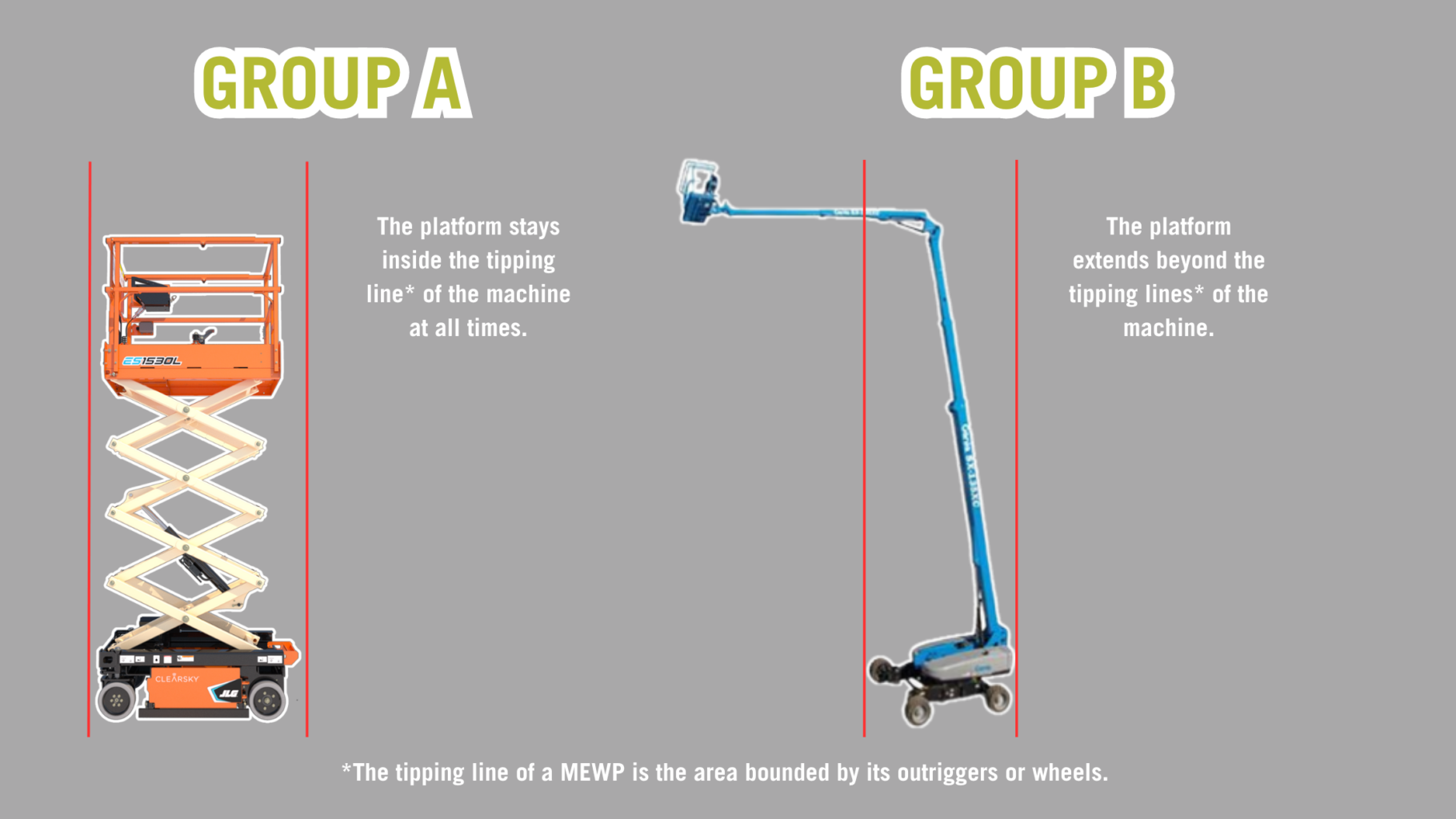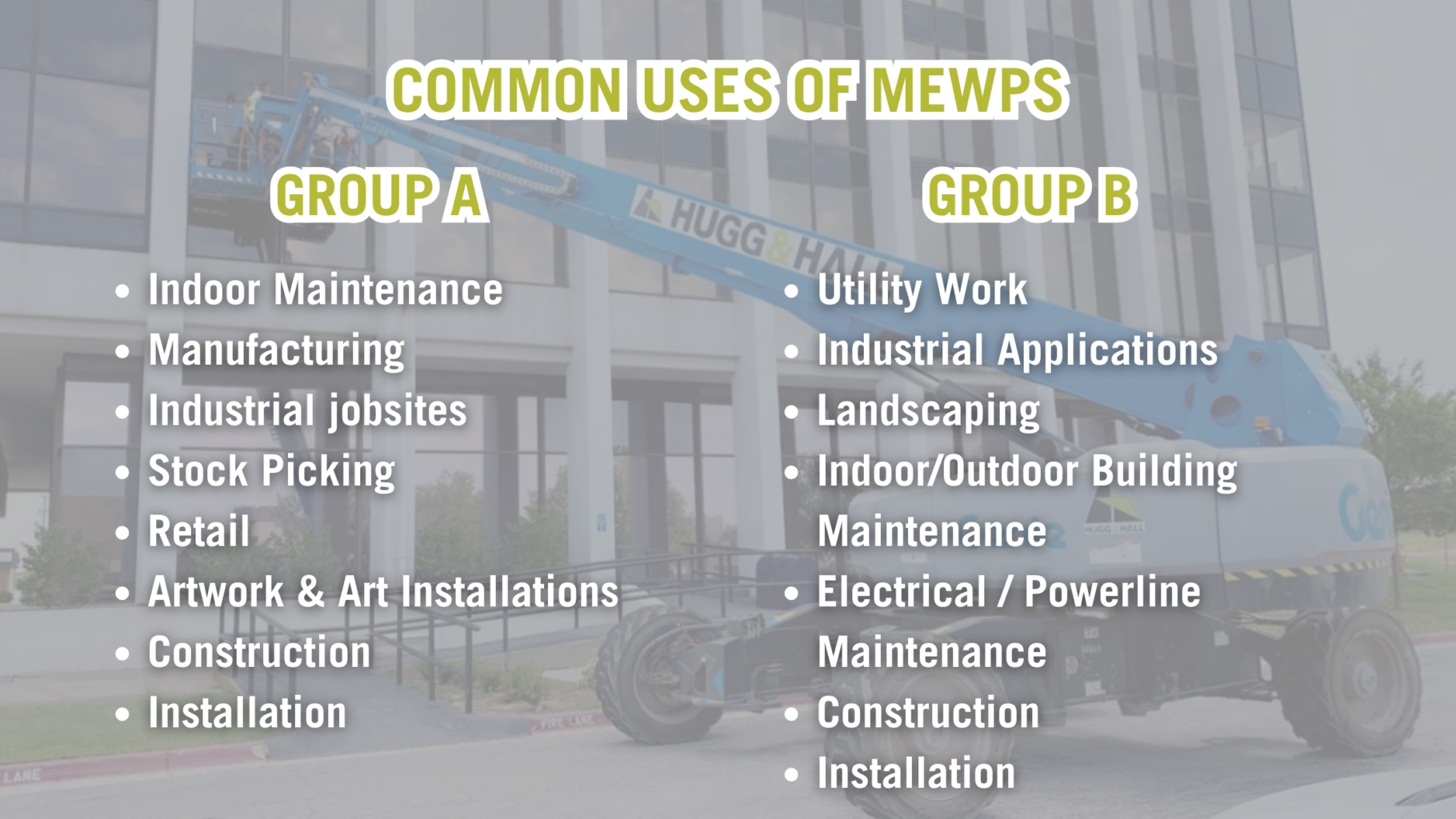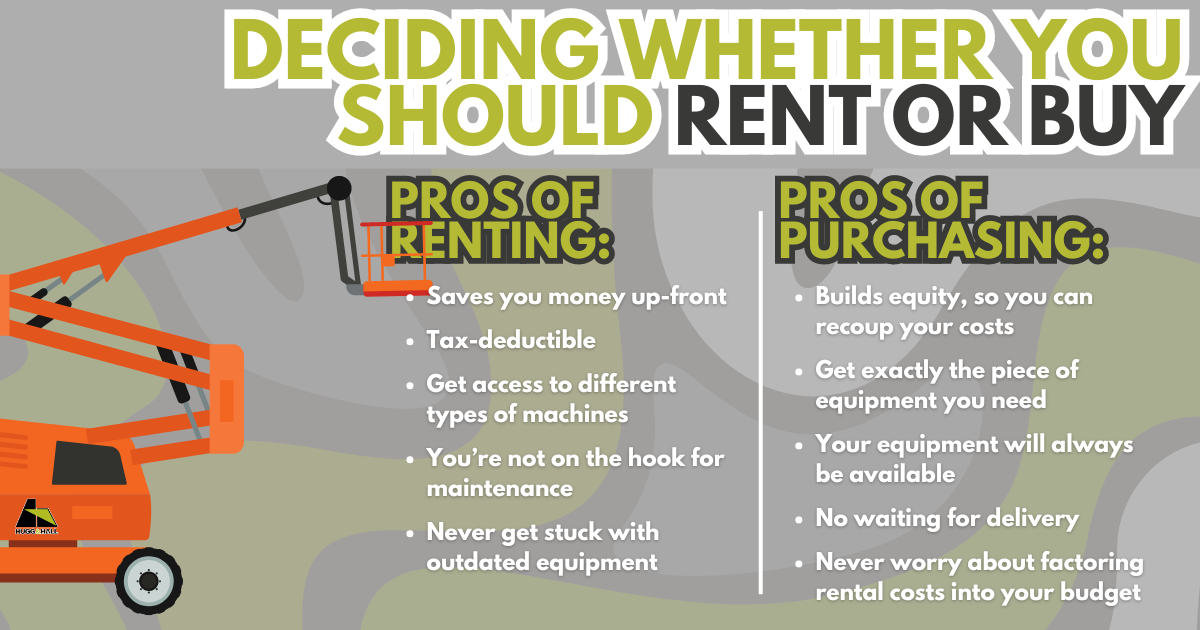
Your Complete Guide to MEWP Rentals and Sales
Equipment is flying off the lot as the busy season begins, and Mobile Elevating Work Platform (MEWP) rentals/sales are no different!
MEWPs are some of the most popular types of equipment we rent and sell here at Hugg & Hall. Are you confident you’ll pick the right one for your jobsite or project?
We’re here to help you make the best decision! Read this article to learn more about MEWP rentals/sales and how Hugg & Hall can help!
Table of Contents
- Types of MEWPs + Examples
- Functions of MEWPs
- Choosing the right MEWP
- Renting vs buying a MEWP
- Training
- Takeaways
1. Types of MEWPs
In 2020, the American National Standards Institute (ANSI) changed the classifications of various aerial work platforms (AWPs) and classified them as MEWPs for the first time.
These MEWPs are now classified according to group and type.

Type 1 MEWPs can only move in the stowed position. The platform must be lowered completely before you move the machine.
Type 2 MEWPS can move when the platform is elevated. Their movement is controlled from the chassis.
Type 3 MEWPs can move when the platform is elevated. However, their movement can be controlled from the platform.

Want an even more comprehensive understanding of MEWP types and ANSI standards? Check out this article from Conger about MEWP types.
2. Functions of MEWPs
In all cases, MEWPs are used to access hard-to-reach places. They help you access heights and places where it would be difficult or unsafe to work without a platform.
You can use the six different types of MEWPs for various functions on most jobsites.

3. Choosing the Right MEWP
MEWP classifications aren’t the only things that vary! Each type of equipment has minor differences that will help it perform better on certain jobsites.
The factors you’ll most commonly see affecting your rental are height, terrain, and specific project needs.
If you call Hugg & Hall for a MEWP rental, our team will be the ones asking the questions! They’re incredibly well-versed in the different types of MEWPs and know what to ask to ensure you get the right equipment for your jobsite.
Height
At Hugg & Hall, our MEWP equipment heights range from 19ft to 150ft!
Our electric scissor lifts and rough-terrain scissor lifts can range from 19 feet to 53 feet when fully extended.
Whether you need an articulating boom lift or a telescopic boom lift, we’ve got boom lifts from 30 feet to 150 feet when fully extended.
Terrain
Your project’s terrain helps our rental team determine what kind of lift you’ll need!
Highly specialized MEWPs, like boom lifts with outriggers, are often small enough to fit through a standard doorway, making them a great choice for indoor projects.
Additionally, booms with outriggers are incredibly versatile and are the only boom lifts approved for projects on uneven ground.
Some MEWPs, like scissor lifts, are designed for both indoor and outdoor projects. Rough-terrain scissor lifts are commonly used for outdoor jobsites when they will be rolling over uneven ground.
Project Needs
Your project makes the most impact on what type of MEWP our rental team will recommend.
Because scissor lifts fall under Group A, you must position them directly next to what you’re planning to work on.
If that isn’t feasible, you’ll need to consider a Group B lift, like a telescopic or articulating boom, which can be parked further from what you’re working on.
Not sure which MEWP is best for your needs? Contact our knowledgeable rental team! They can help you determine what type of equipment you need.
4. Buying Vs Renting a MEWP
Did you know renting equipment can be 2-4 times cheaper than financing it?
However, there’s a caveat: depending on what your company does and how often you use your MEWP, financing and purchasing might be the better option.
Running a cost-benefit analysis for your company will tell you which option will save you money in the long run.
Rental Pricing
The cost of renting a MEWP varies from company to company. The function of the MEWP and how specialized the MEWP is will also affect costs.
Because the cost of rentals varies between seasons, it’s best to contact a salesperson for an exact quote when you decide you’re ready to rent.
Certain MEWPs, like electric scissor lifts, are very common on most equipment yards and are usually less expensive to rent than an articulating or telescopic boom lift.
Specialized pieces of equipment will typically cost more per-day than generalized equipment, but generally you’ll still be saving money renting instead of purchasing the equipment.
Another factor to consider is how long you’ll have the rental. Often, you’ll save money per-day the longer you have the machine. A four-week rental is usually less per day than a one-week rental.
When you need the most cost-effective option, turn to Hugg & Hall for your rentals!
Want more info about the costs of renting vs buying? Check out our blog post to learn how to perform a cost-benefit analysis!
5. MEWP Training
Do you need specialized training to operate a MEWP?
Yes. ANSI and OSHA require aerial lift training to protect operators and bystanders.
Want to make sure you’re up to speed on MEWP operations? Hugg & Hall offers operator training and train-the-trainer programs! Contact our training department today!
6. Takeaways
- ANSI categorizes MEWPs as Group A or Group B, with subcategories of Type 1, Type 2, and Type 3.
- Each subcategory of MEWP will meet specific jobsite needs. If you have questions about which MEWP is best for your jobsite, contact our team!
- Renting can be extremely cost-effective and save you more money than purchasing, but it’s best to perform a cost-benefit analysis to be sure.
- All MEWP operators must be trained and certified.
Back to News
Subscribe and unlock cutting-edge equipment insights, trends and tips!
Subscribe
